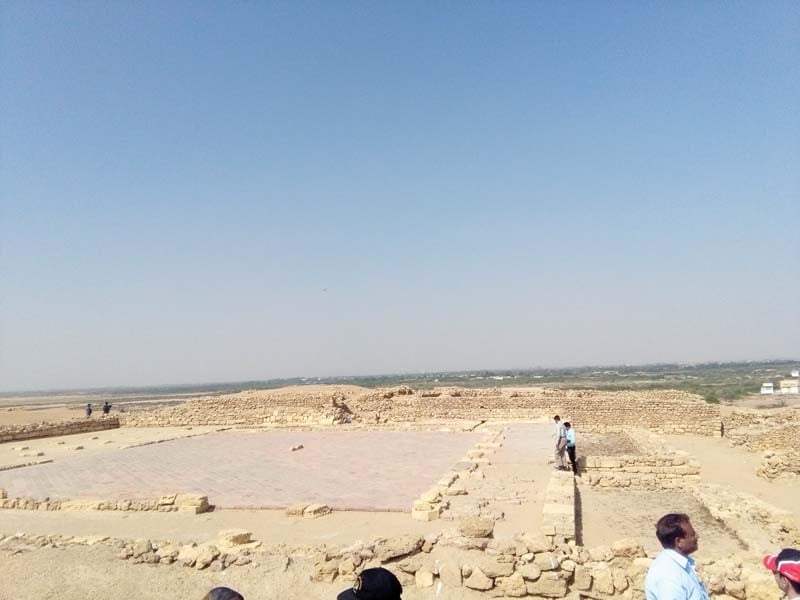
The chief curator of the Archaeological Site and Museum at Bhanbhore, Irshad Ali Ridd, shared these details with The Express Tribune at an event organised by the Sindh culture department and the Italian consulate.
"The legend of Raja Dahir comes from the land of Bhanbhore, [which lay] in the then area of Kech [in Balochistan]," shared Ridd on a sunny Saturday afternoon. "When Raja Dahir refused to help, Hajjaj bin Yusuf, under the reign of Umayyad Caliphate, sent forward a commander of some repute, Mohammad bin Qasim."
According to Ridd, it was then that Qasim travelled towards Sindh. Before this, he shared, the Arabs' only presence was near the coast of Makran, which is now a part of Balochistan. "This coast at Makran was the only source of income and trade for the Arabs."
Talking about the historical site known as the 'Babul Islam', Ridd said that it was the fort that was under the command of Dahir. "This fort in itself couldn't be captured for one whole month because it was such a strong fort of the Brahmin prince, Dahir," he narrated. "Qasim was informed [that] until the flag - the emblem standing tall on the fortress - [was struck, the] place [can]not be captured by the Arabs. Hearing this, Qasim struck the flag and marched ahead with an army of 12,000 men and captured this place. Hence, it is known as Babul Islam as of today."
According to Ridd, Dahir was initially injured in the battle and Qasim was called back. However, the headstrong commander that he was, he decided to stay and ruled the region for four years after that and continued to conquer lands from the site as far as up towards Sehwan and then Multan. "In the battle itself, it is estimated that two million people were killed," he shared.
Since Qasim was enamoured by the majestic charms of Sindh, he had refused to go back. "Yusuf then sent his commandos to bring back Qasim," said Ridd. "While capturing him, they draped him in a calf's skin and took him by sea. On the way, Qasim died and was presented to Hajjaj bin Yusuf as a dead man."
Published in The Express Tribune, November 16th, 2016.




1736599343-0/fizza-(8)1736599343-0-165x106.webp)






1736508423-0/Express-Tribune---News-Desk-(9)1736508423-0-270x192.webp)


1736495887-0/sidra--(63)1736495887-0-270x192.webp)








COMMENTS (6)
Comments are moderated and generally will be posted if they are on-topic and not abusive.
For more information, please see our Comments FAQ